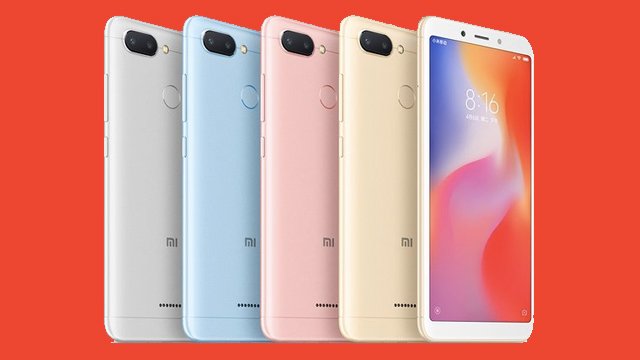Why spend 1,000 euros on a smartphone if with just over 100 is enough?
The consultancy Deloitte has already said it. High and low range will be the battleground of smart phones in 2018. Or they pay more than 1,000 euros, or below 200 will find the user more and more smartphones that begin to equip functions with artificial intelligence.

No, I'm not going to talk about the Samsung Galaxy Note 9, which was presented in New York on August 9. Among other things because I have not had the privilege of seeing it, or touching it, or tasting it, yet. When I do, if I'm lucky, I'll tell you right here. Yes, I am going to talk now about the Xiaomi Redmi 6 and 6A, which I have had in my hands for a few days, and that among other things costs ten times less than the new flagship of Samsung.
Logically on paper there is no color either in terms of performance or processing capabilities, software, or in everything that has to do with the hardware itself or the solutions it advocates thanks to artificial intelligence (AI), but why I'm going to spend 1,000 euros on a smartphone if I can spend less than 200 and I can have more than worthy benefits? Do I need the 1,000 or the little over 100?
Well, this is what I am going to try to explain, putting on the back the characteristics of the terminal of the Chinese brand that is raging in Spain and that already has a market share more than worthy even ahead of some brand that does not raise its head. Not in vain the consultant Deloitte ventured at the end of 2017 in a report the variables in the market of smart devices for 2018, and said that there would be more quantity and variety of equipment in the environment and above 1,000 euros, as this is happening and it will continue to happen, but there would also be more and better offer, with more features, in terminals below 200 euros.
And Xiaomi, not only with the Redmi 6, seems to be winning the battle to its competitors in this area that are smart phones below 200 euros. Redmi 6, costing 119 Euros in its version of 16 GB capacity, equipped with the new MediaTek Helio P22 processor 12 nanometers (nm) based SoC, which has a processor (CPU) of eight cores and consumes approximately 48% less energy than comparable processors with more than one chip and 28 nm. In addition, the CPU has ARM's Big.LITTLE architecture, which facilitates the automatic change of the low consumption performanceal core according to the task it is performing, which allows a balanced performance and energy consumption.
The screen of Redmi 6 is 5.45 inches and 18: 9, which is equivalent to 80.5% of the total surface of the mobile is screen. The polycarbonate back shell with metallic finish is curved symmetrically and tapers towards the edges to improve its ergonomics.
Smart camera
Redmi 6 has a dual intelligent camera of 12 megapixels and 5 megapixels. And the main sensor of the camera has pixels of 1.25 μm, the largest among the smartphones in its category. Having larger pixels means receiving more light, which results in better photographic quality and less noise, especially in low light conditions. The camera also has autofocus Phase Detection that allows to improve the focusing speed. In addition, the 5MP front camera of Redmi 6 is compatible with the AI (Artificial Intelligence) portrait mode of Xiaomi, which offers realistic (defocused) bokeh effect with a single lens.
The Xiaomi Redmi 6A has the same body and screen as Redmi 6, but differs in the processor, since it incorporates the SoC MediaTek Helio A22 model, which also has 12 nanometer technology. It has a 3000mAh battery, which allows it to stay in standby mode for up to 19 days. In addition, Redmi 6A has a 13-megapixel rear camera also with Phase Detection autofocus and a 5 megapixel front camera, both capable of using the Xiaomi portrait mode with artificial intelligence. The operating system of the Chinese brand, MIUI, has been optimized for Redmi 6A, which allows to reduce the memory usage of the system applications by nearly 30%.
And all this for 119 or 139 euros. If we want more, ...


